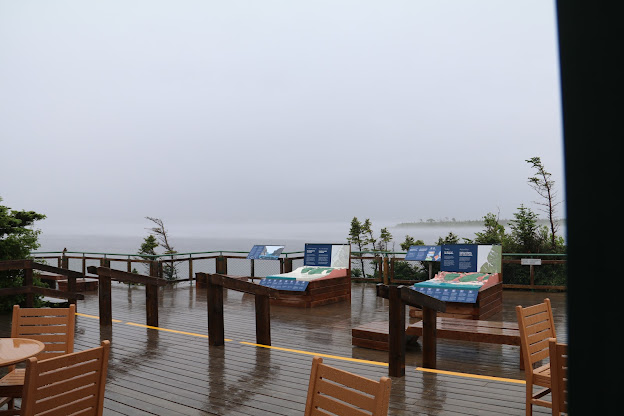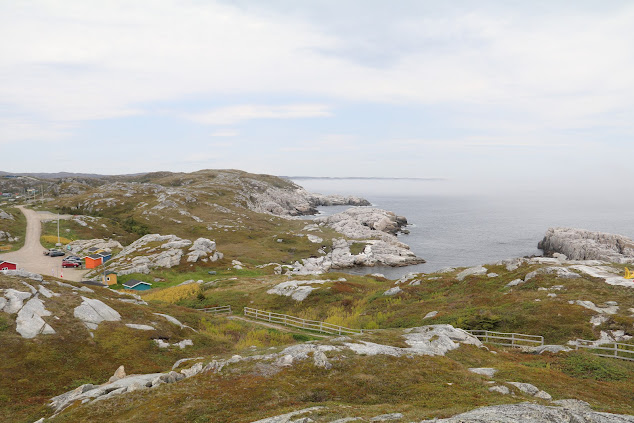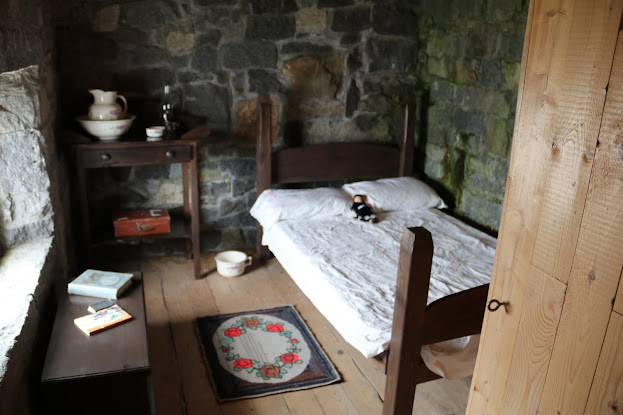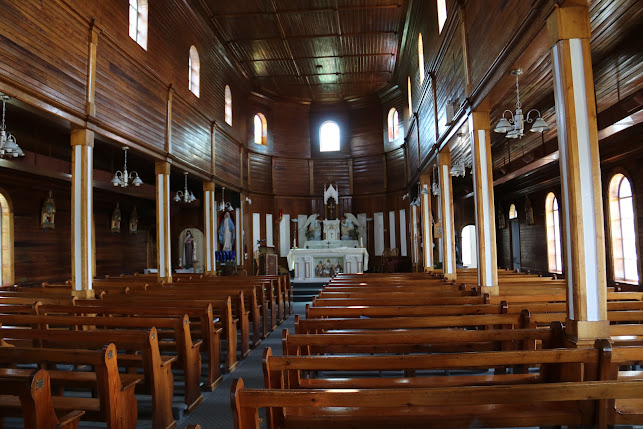On Thursday we the made the drive up the west coast to Rocky Harbor and checked into the Gros Morne RV Park. Gros Morne, pronounced gross more, is the northernmost extension of the Appalachian mountain range. The road to Rocky Harbor was scenic but treacherous. There were frequent curves at the terminus of a steep downhill grade. That is a road condition that RV drivers have a lot of respect for. In an automobile you don't think much about it because you can slow down by just stepping on the brake. When driving a heavy vehicle you must keep your speed down so that your brakes are capable of slowing you down to negotiate the curve.
After getting settled in we took a drive out to Norris Point and then back to Rocky Harbor for dinner at a local restaurant.
Panoramic view near Norris Point:
We had booked a tour of the Western Brook Pond, a fresh water fiord, for Friday June 20 before leaving for the trip. It is a popular tour and we wanted to make sure we could get tickets. Unfortunately the weather was not in our favor. We left early and stopped at a local cafe' for breakfast. The food was good and we both had omelets. To get to the Bon Tours boat dock for the Western Brook Pond tour we needed to drive 17 miles up the coast to the Western Brook Pond Trail parking lot and then hike 1.8 miles to the dock. It rained the entire drive and continued to rain once we arrived. We opted to take the round trip shuttle for $20 to the boat dock. Walking 1.8 miles to the dock in cold rain did not seem like a fun thing to do.
The tour was scheduled to leave at 12:30 and we were at the dock about 11:30. It became obvious that the weather was not going to clear in time for the tour but the boat captain held out until 1:00 PM before canceling the tour. Our tickets were automatically refunded and everyone headed back to the parking lot. Some walking in the rain and some waiting to catch the next shuttle in the rain. As we waited for the shuttle we struck up a conversation with a couple from Ontario. His wife was born in Labrador City and they had just finished a visit there. He said there was nothing on up the coast and the road was terrible. To shorten our trip we had just cut out the planned visit to the peninsula and St Anthony and that information made us feel better about that decision.
Here is a photo we took from the tour office showing how foggy the lake is:
Here is a video of what it was like in the tour office:
As luck would have it later in the afternoon the weather cleared and we took a drive to get some photos. In my home town of Tryon, N.C. we have a mountain named Hogback Mountain. We stopped at a pullout to take a few photos of a mountain here that looks just like the mountain in my home town. I am not very skilled at taking selfies but here is one of Pam and I with that mountain in the background.
Here is a view looking west with the sun reflecting on East Arm:
This photo reminds us of the Smoky Mountains:
We drove back to Rocky Harbor for dinner at a local restaurant and caught the sunset on the harbor driving back to the campground.
On Saturday we left Rocky Harbor and back tracked to reach the Trans Canada Highway and continued on to Gander. We encountered some very strong side winds that gave us pause. We had heard about the winds from a fellow camper who said a semi truck had been blown over a few days ago in the area. We were glad to reach Gander where we found out from the locals that the strong winds were not a normal condition.
Gander is famous for its airport and the town gave refuge to 38 commercial flights and 7000 passengers when the air space in the United States was closed on September 11, 2001. There is a local play about the event but any dates that we would be able to see the show were sold out. We did visit the North Atlantic Aviation Museum where we discovered that construction of the airport began in 1936 by the British and the first plane landed here in 1938. Newfoundland was a British colony until March 1949 when it became the 10th province of Canada. An airport in Gander was advantageous because of its proximity to Ireland and the United Kingdom. We forget that transatlantic flight was not always a causal undertaking like it is today. During World War II the Gander airport was a strategic military resource for transporting planes to the war effort in Europe and during the course of the war about 10,000 planes were flown from Gander to Europe.

Of course my personality was drawn to the display of the Rolls Royce Merlin, 27 liter, V12 engine that powered famous WWII aircraft like the Spitfire.
But the display that got me real excited was a mock DC-3 cockpit complete with sound and video. Here is a short video of the display on youTube. The video was to large for a direct insert to this blog.
https://www.youtube.com/watch?v=wtIX96meXbo
































































